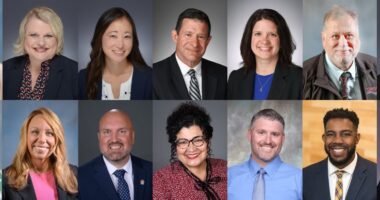Change Strategies: Bridging Research and Practice for School Success
Session notes from "Change Strategies: Bridging Research and Practice for School Success," presented by Steve Tozer, at UNITED: The National Conference on School Leadership.

What was the speaker’s main message?
School leaders are critical in improving student learning and achievement. Tozer’s research identified three “Big Ideas” about public education:
- Public schools are critical for the public good;
- Learning by doing makes the difference, and it’s especially important to begin this in early childhood; and
- Leading organizational change requires ensuring there is adult learning to support that change.
His research was conducted with Chicago Public Schools (CPS). CPS was motivated to change in the late 1980s after a statement by U.S. Secretary of Education William Bennett that they were “the worst school system in America.” Based on significant change in CPS, it is now evident to the public that school leaders make a large difference.
What was the speaker’s best quote?
“Socrates didn’t know the answers to the questions he asked, but he knew the right questions to ask. The same is true for school leaders.” School leaders need to be able to facilitate and support adult learning and empower staff to generate ways to make changes for the overall improvement of the school.
“My authority to require you to do something you might not otherwise do depends on my capacity to create the opportunity for you to learn how to do it.” (Elmore, School Reform from the Inside Out, 2004).
What were the top three ideas from the session?
Conceptual frameworks are the effective way to improve school outcomes. When school leaders use a framework, staff is engaged in generating the areas and strategies for improvement. Six frameworks were described that included:
- Vision, Systems, and People;
- Research, Policy, and Practice;
- Professional Standards;
- Equity;
- P-3 Education; and
- Continuous Improvement.
Adult learning is critical. A teacher can’t be expected to improve on the identified areas for change, if they haven’t learned about what’s expected of them.
School leaders don’t have to have all the answers, but they need the skills to facilitate changes. Using the professional standards for the six different frameworks is one approach to support this process.
What is one strategy that will help you with instructional leadership?
I believe having the six frameworks as a place to begin with our school leadership team, will allow us to evaluate our highest need for improving outcomes. Then we will be able to bring that to our staff to begin the work of applying it to our current goal-setting process connected to professional growth.
What is one idea that you want to learn more about?
I want to explore the various professional standards that were mentioned in the session, as I hope to look for alignment with our overall teacher evaluation tool. I would like to identify ways to connect effective practices to our tool that is already familiar to our staff.
What are resources you will check out?
One of the resources Tozer mentioned multiple times was, Learning to Improve: How America’s Schools Can Get Better at Getting Better by Anthony S. Bryk and Paul LeMahieu. When discussing in our small group during the session, my group shared thoughts about the fact that even after implementing some high impact practices at times, we still don’t see improved outcomes.
Starry Messenger: Cosmic Perspectives on Civilization by Neil deGrasse Tyson highlights how science sees the world. Steve connected it to the importance of school systems needing to align research, policy and practice to make change. He emphasized that Tyson’s lens as an astrophysicist allows us to see the great value of unity.
What are some relevant or surprising stats you learned?
By 2015, Chicago’s largest enrollment group, Latino students, surpassed white counterparts in the rest of the state-above and below FRL in math and reading.
Jeremy Engebretson is principal of Raven Stream Elementary in New Prague, Minnesota.
Read more session notes in the NAESP Conference Blog.




